If Vienna has a heart, it is the St. Stephen’s Cathedral or Stephansdom in German. This church is the symbol of Vienna and stands as one of Austria’s most important Gothic structures. When you start planning your trip to Vienna, this is a place you shouldn’t miss.
More than a million visitors went to see St. Stephen’s Cathedral last year, and we were one of those. This church is one of Austria’s most popular attractions, the main Roman Catholic church in Vienna, and the seat of the city’s archbishop.
It stands 137 meters high with a beautifully decorated roof, representing over 800 years of architectural history.
A visit to St. Stephen’s Cathedral is essential for every visitor to Vienna.
We can say without a problem that we didn’t plan our trip to Vienna well. We got there with too many ideas and places to visit and got lost more than anything else.
But one of the sites we managed to pull ourselves together and stay was St. Stephen’s Cathedral. All of this is because of the clear view from the top, the best view you can have from Vienna, as you can see in the pictures below.
But, before we start talking about the view, we have to say some words about the 800 years of history that belong to St. Stephen’s Cathedral. We know it will be hard to be short regarding a place that witnessed many important events in Habsburg and Austrian history.
The Stephansdom saw so many things, but one strikes me more than the rest: 1741 Antonio Vivaldi’s funeral occurred in the cathedral.



The History behind St. Stephen’s Cathedral
Around the 12th century, Vienna had become an important center of German civilization. The four churches that stood in the city started to become too small for the number of people going there to pray. This is why St. Stephen’s Cathedral was founded in 1137. Ten years later, in 1147, the partially constructed church was dedicated to Saint Stephen in the presence of German nobles about to embark on the Second Crusade.
But, the history of this place dates to Ancient Roman times. In 2000, excavations for a heating system revealed some graves more than 2 meters below the surface that were carbon-dated to the 4th century. Nowadays, it is believed that an even older religious building used to stand there, but there is little information about it.
The first version of St. Stephen’s Cathedral was completed in 1160, but reconstructions and expansions kept the church growing until 1511. Repair and restoration continue to the present day. This is how this church still stands today, and this needs to keep going.
During the Second World War, the cathedral experienced nearly destruction. Initially, it was saved from intentional damage at the hands of retreating German forces when Captain Gerhard Klinkicht ignored the orders from the city commandant to fire at the church and leave just debris and ashes.
But, in April 1945, some civilians set fire to nearby stores as the Red Army entered the city, and the wind carried this fire to the cathedral. This proved to be nearly fatal to the building. The roof was severely damaged and collapsed over the tomb, crypts, and other treasures.
This is how the Rollinger choir stalls, carved in 1487, were lost. Although there was much to be rebuilt after the war, St. Stephen’s Cathedral had a limited reopening in December 1948, with a full reopening in April 1952.
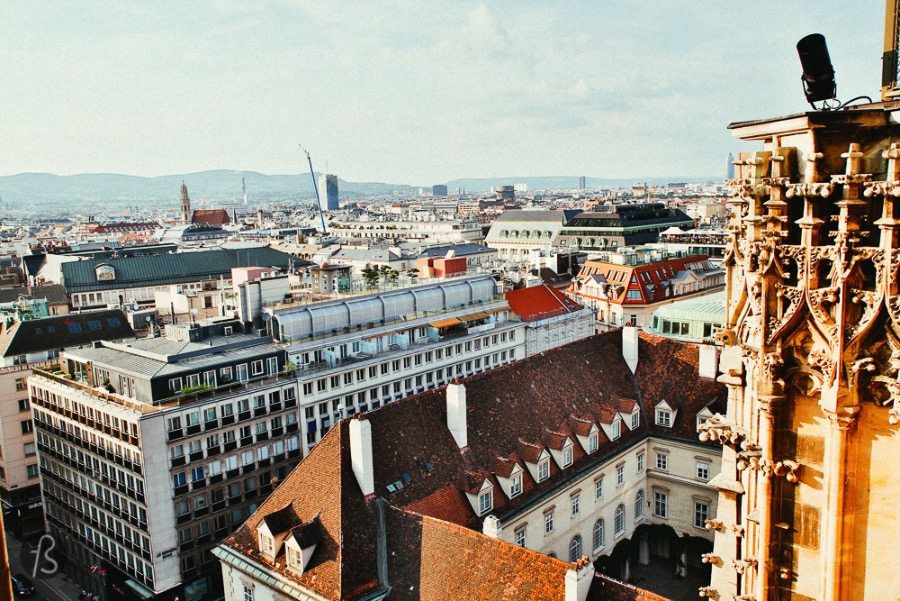
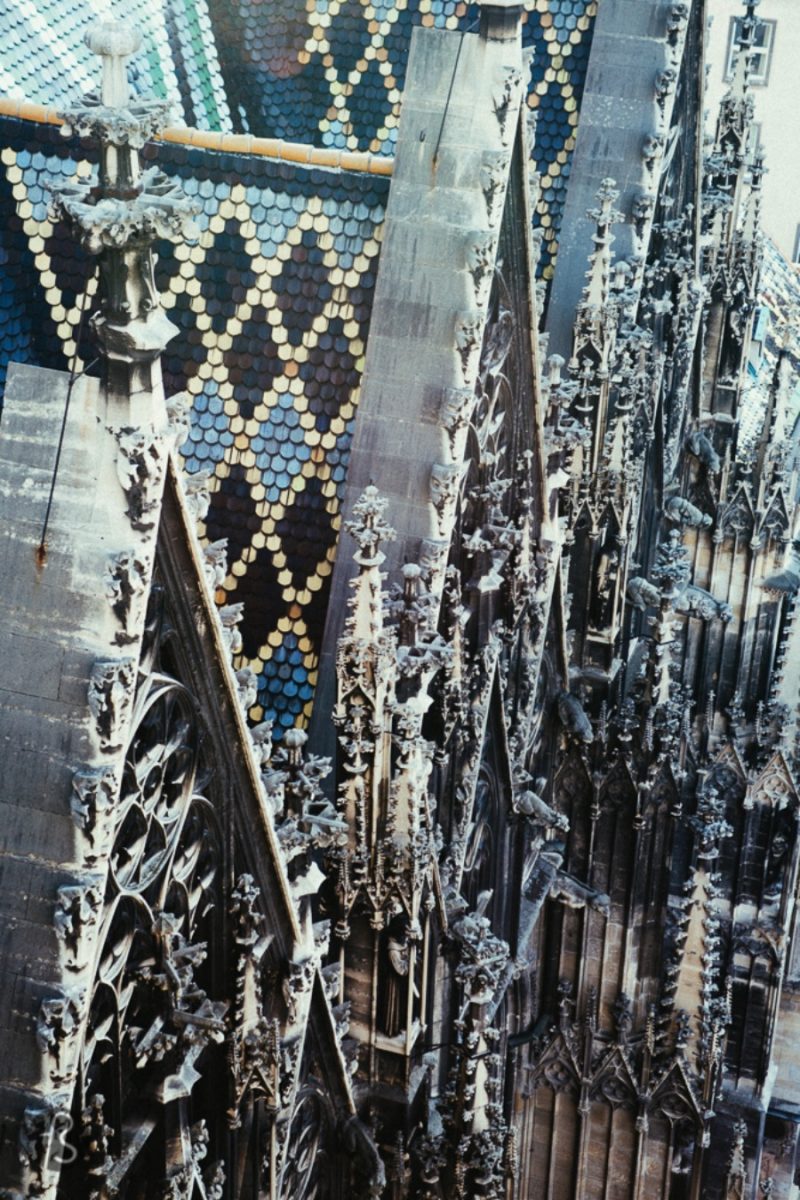
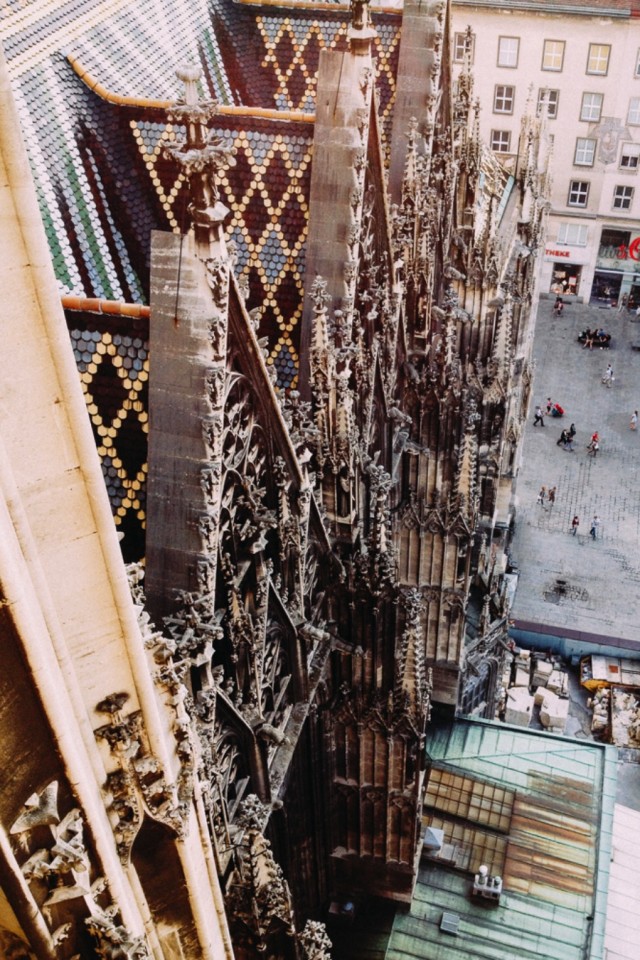
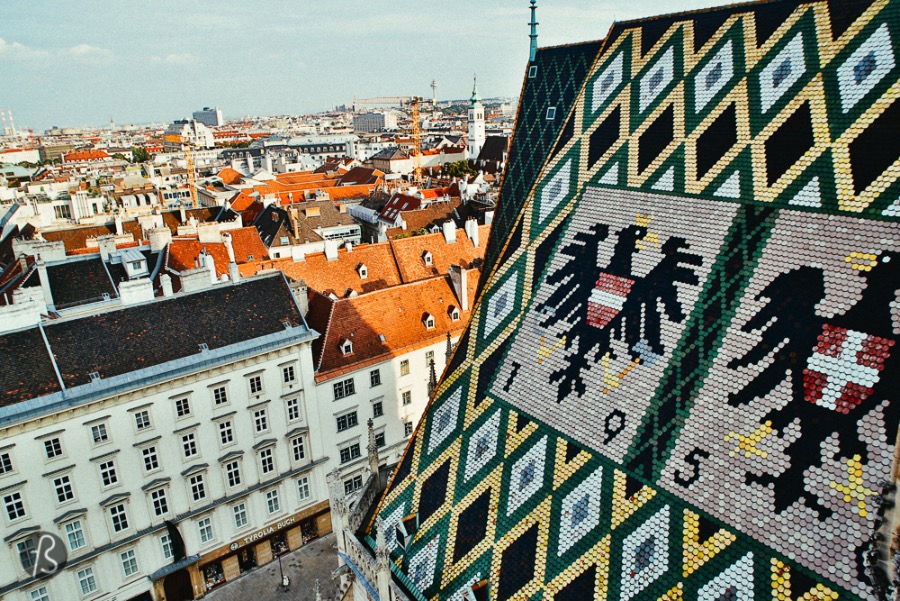
St. Stephen’s Cathedral Highlights
St. Stephen’s Cathedral is particularly famous for its magnificent towers, which have dominated Vienna’s skyline for centuries. The tallest tower is nicknamed Steffl and stands 137 meters high over the Austrian capital. St. Stephen’s Cathedral’s massive south tower is its highest point and a feature of the Vienna skyline. Its construction lasted 65 years, from 1368 to 1433, and it was heavily used as the main observation and command post during the Siege of Vienna in 1529 and the Battle of Vienna in 1683.
The north tower was initially supposed to mirror the south tower, but the design proved too ambitious, and the construction was halted in 1511 since the Gothic cathedral era was ending. It was only in 178 that the tower was completed with a Renaissance cap, nicknamed the “water tower top” by the Viennese people. Nowadays, it stands 68 meters tall, almost half the height of the south tower.
It’s at the North Tower that the bells are housed. Those bells are why the composer Ludwig van Beethoven discovered the totality of his deafness. The history says that he saw birds flying out of the bell tower after the bells’ tolling but could not hear the sounds. This was the moment they realized there was something wrong.
The largest bell at St. Stephen’s Cathedral is called St. Mary but is nicknamed Pummerin and weighs over 20 thousand kilograms. This bell is the largest one in Austria and the second largest swinging bell in Europe, after the one in Cologne’s Cathedral. Initially, the bell was cast from the cannons captured by Muslim invaders in 1711. It had to be recast after it fell to the floor after the 1945 fire.
Another highlight of the St. Stephen’s Cathedral is the roof. It is beautifully ornately patterned with more than 230,000 colored glazed tiles. On the south side, they form a mosaic of the double-headed eagle used as a symbol by the Austrian Empire and the Habsburg Dynasty. On the north side is the coat of arms of the City of Vienna and the Republic of Austria. The roof is so steep that it needs no cleaning besides the rain. From the top, it looks even more beautiful.
We visited the St. Stephen’s Cathedral with two things in mind. One was to see the view from the towers, and the other was to visit the catacombs. There, you can find the resting place of Prince Eugene of Savoy and Frederick III, Holy Roman Emperor. We haven’t seen it yet, but you can do it quickly. Just follow the links at the end of this post, and everything will be alright.
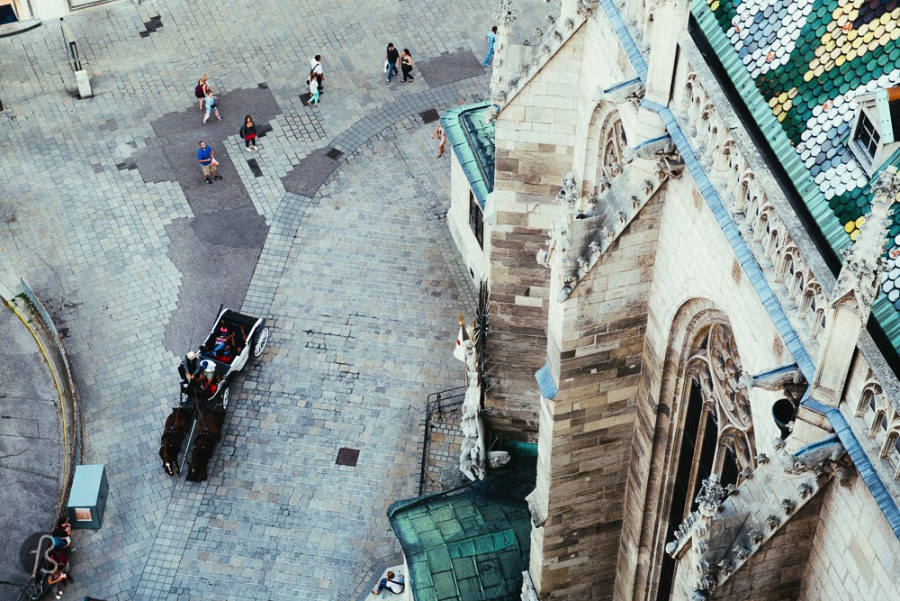
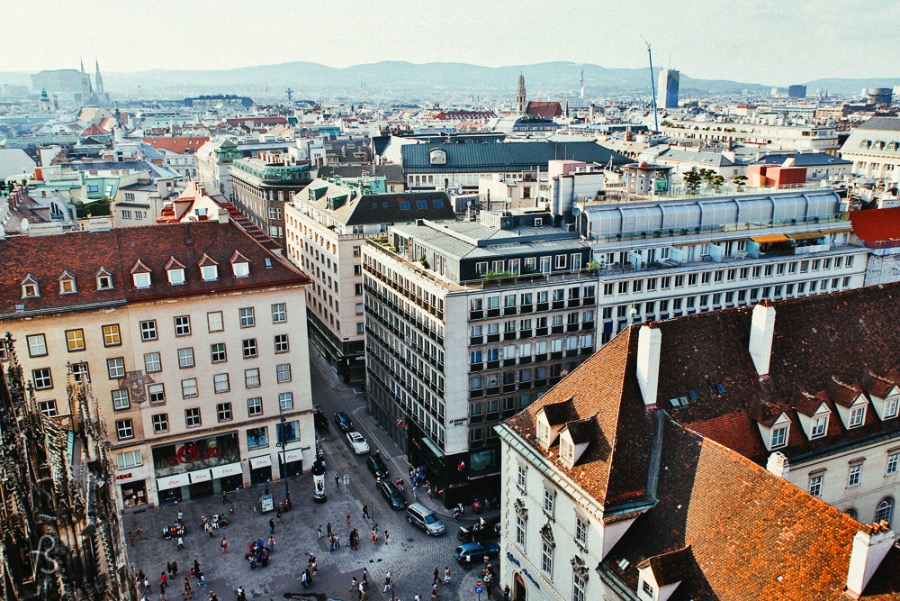
What else can you do nearby?
St. Stephen’s Cathedral is Vienna’s most prominent landmark and the heart and soul of the city. Stephansplatz is the square where the church stands and marks the city’s geographical center. Around it, you will find many restaurants and cafes, museums, and other historical buildings. Below, you can see our favorite ones.
If you get to St. Stephen’s Cathedral early in the day and want breakfast around the church, we can only advise you to find the Haas & Haas Teehaus on Stephansplatz. They have various brunch options, and the Austrian apricot jam is to die for.
If you want lunch and are not worried about money, try Plachutta, Vienna’s best-known luxury restaurant. There, you can find the Tafelspitz, the favored dish of Emperor Franz Joseph I of Austria.
The Figlmüller is an excellent option for those traveling on a budget. Many online tips say they have the best Wiener Schnitzel on the planet! You have to try it for yourself.
And, if you still need more history after touring the St. Stephen’s Cathedral, you should go straight to the Mozarthaus, the only surviving Mozart apartment in Vienna. Mozart lived there from 1784 to 1787, composing one of his most well-known operas, The Marriage of Figaro.
How can you get there?
It is pretty easy to get to St. Stephen’s Cathedral. Stephansplatz is the closest subway station, and you can easily walk to the church from anywhere within the city center, a significant tourist attraction.
Beyond the Roof and Towers: Unveiling the Secrets of St. Stephen’s Cathedral
Stephansplatz 3, 1010 Wien
www.stephanskirche.at